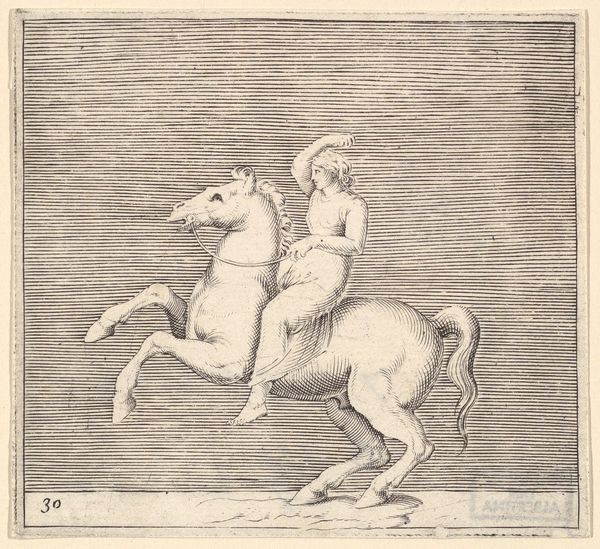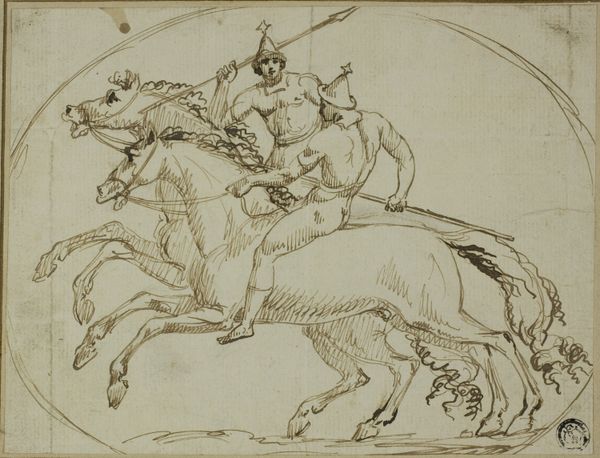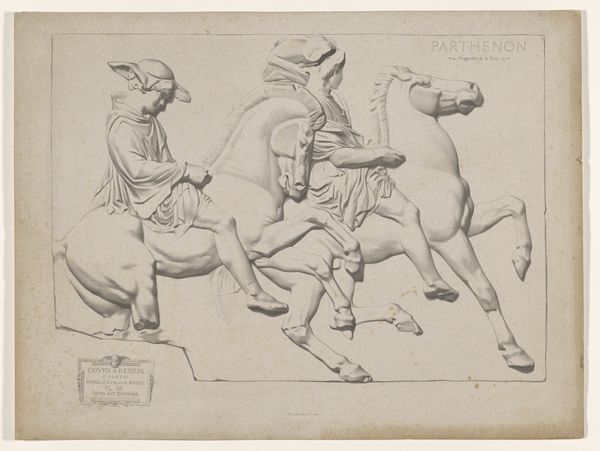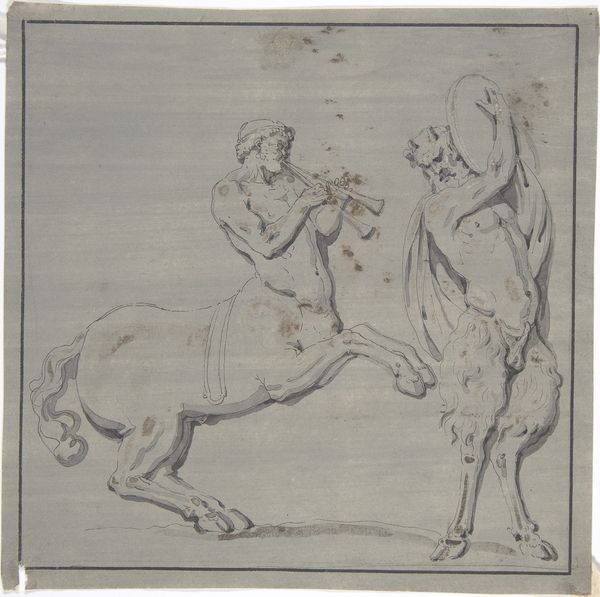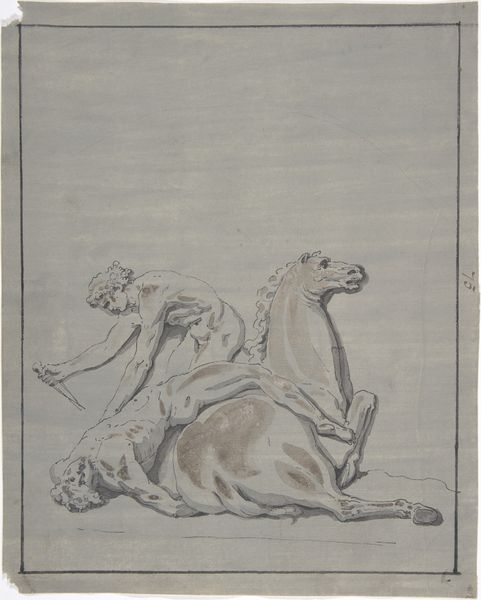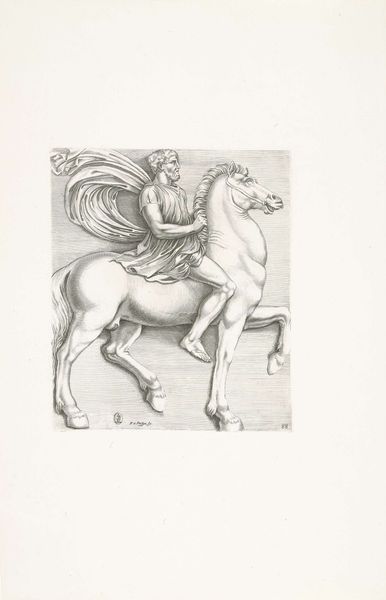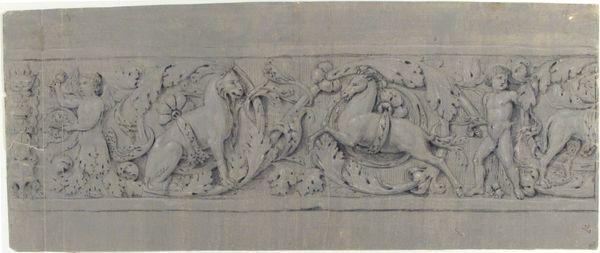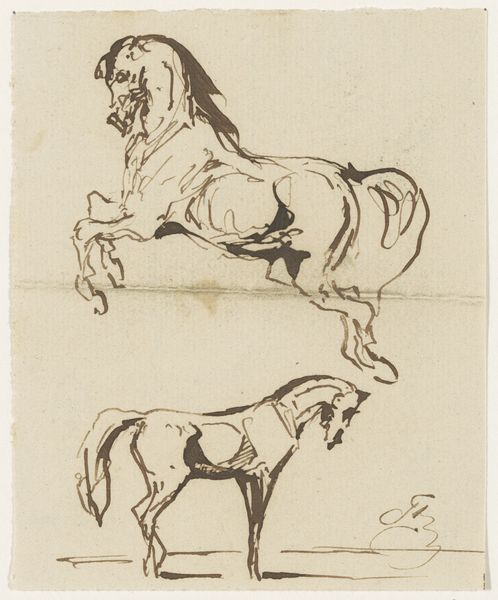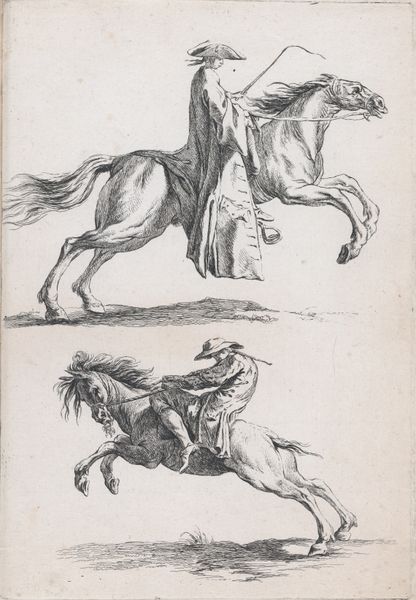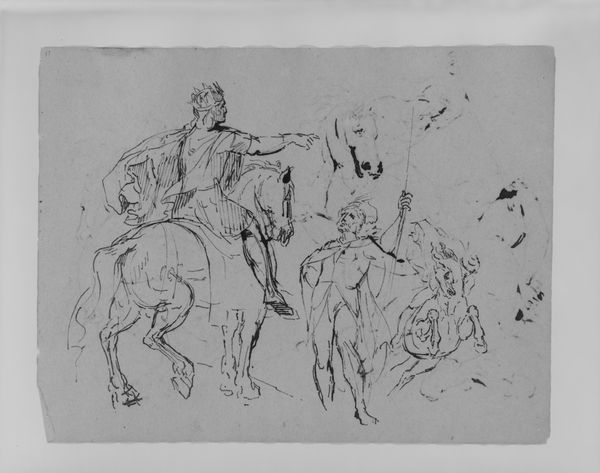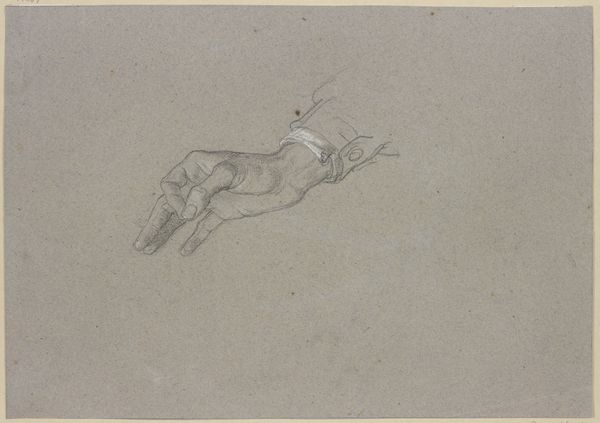
drawing, print, pencil, charcoal
#
drawing
# print
#
landscape
#
figuration
#
pencil drawing
#
pencil
#
horse
#
charcoal
#
history-painting
Dimensions: sheet: 5 1/2 x 9 11/16 in. (13.9 x 24.6 cm)
Copyright: Public Domain
Curator: This is a drawing called "Rider and Horse in Battle Scene." Created by an anonymous artist in the 18th century, it’s done with pencil and charcoal. You can currently find it here at The Metropolitan Museum of Art. Editor: My first thought is, what an arresting image! There is such energy in those rearing horses. You immediately feel the power, even violence, in their postures and facial expressions. The gray toned paper contributes to a feeling of conflict or strife. Curator: The conflict is front and center isn’t it? Think about the imagery surrounding warfare and leadership that circulated in the 18th century. The elevated status, the glorification of masculine prowess. It makes me wonder what political message was being sent by choosing this composition. Who was this rider? Whose story is being told, and more importantly, whose story isn't being told here? Editor: Exactly. The rearing horse has long been a potent symbol of power, of domination over the natural world. Think of Alexander the Great and Bucephalus, or the various equestrian statues meant to establish authority through visual impact. And look at the tails of these horses! The repeated, almost floral curves act as symbols of cultivated nobility. Curator: I wonder if this was a study for something larger, or perhaps a reflection on class. The artist seems quite interested in anatomy. And consider how whiteness functions here. Is the white paper the underlay? In what way is the concept of whiteness working, metaphorically, and literally? What are the unspoken assumptions that connect war and conquest to some sort of divine or racial privilege? Editor: Good point. I would add that the tension between the classical form and chaotic action gives me pause. Those flowing lines, reminiscent of antiquity, collide violently with the immediacy of battle. I keep thinking of how war and the iconography of war evolved, particularly over the 18th century. Curator: These observations underscore the power dynamics at play. It reminds me that images, like words, have the ability to shape, influence, and at times, to erase narratives. Thanks for adding depth to my perspective on this. Editor: It's fascinating how art continues to generate meaningful cultural dialogue even centuries later.
Comments
No comments
Be the first to comment and join the conversation on the ultimate creative platform.

